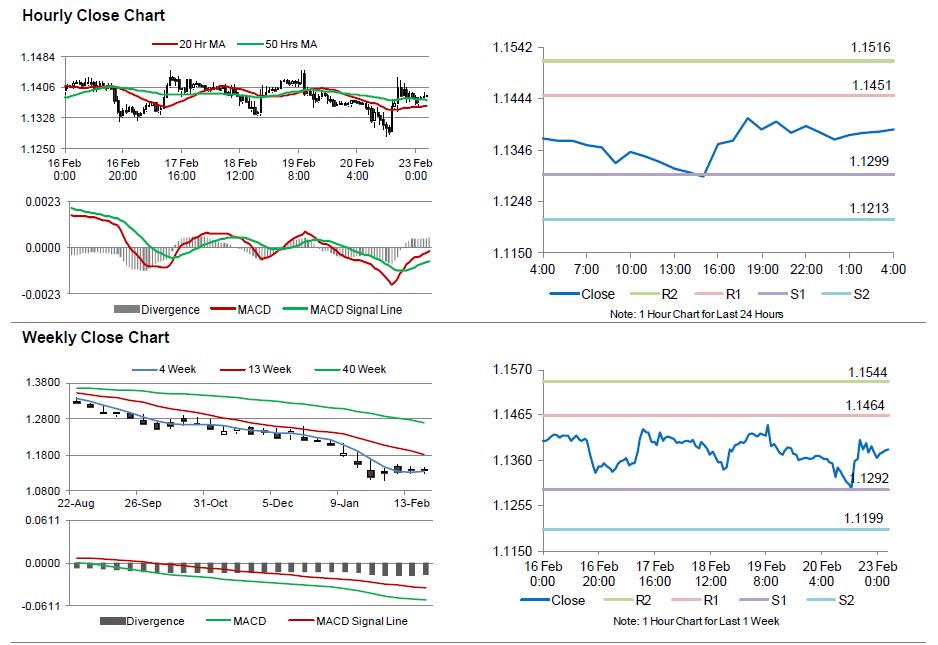On Friday, the EUR rose 0.32% against the USD and closed at 1.1401, following mixed services and manufacturing PMI data in the Euro-zone and Germany.
Data showed that, Germany’s preliminary Markit services PMI climbed more than expected to a level of 55.5 in February, against market expectations of 54.4 and compared to prior month’s reading of 54.0. Meanwhile, the nation’s Markit manufacturing PMI remained unchanged at previous month’s reading 50.9 in February. Markets were expecting it to rise to a reading of 51.5.
In other economic news, the preliminary manufacturing PMI in the Euro-zone advanced to 51.10 in February, compared to a reading of 51.00 in the previous month. Market expectations were for the index to rise to 51.50, while the services PMI edged up to 53.5 in February, from preceding month’s level of 52.7.
Elsewhere, in France the manufacturing activity further deteriorated and remained in the contraction territory, while the services activity surprisingly entered into expansion territory in February respectively.
Separately, the Euro-zone Finance ministers agreed to extend Greece’s bailout by four months, thus preventing Greece from exiting the Euro-Group for the time being.
In the US, the Markit manufacturing PMI unexpectedly jumped to a 5-month high level of 54.3 in February, against market expectations of a drop to 53.6 and following previous month’s reading of 53.9.
In the Asian session, at GMT0400, the pair is trading at 1.1385, with the EUR trading 0.14% lower from Friday’s close.
The pair is expected to find support at 1.1299, and a fall through could take it to the next support level of 1.1213. The pair is expected to find its first resistance at 1.1451, and a rise through could take it to the next resistance level of 1.1516.
Trading trends in the Euro today are expected to be determined by Germany’s IFO economic expectations data, scheduled in a few hours.
The currency pair is trading above its 20 Hr and 50 Hr moving averages.

